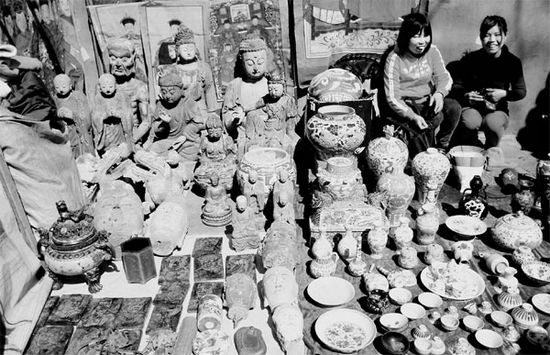
Beijing's Panjiayuan Market is one of most famous antique markets in China. You have to have sharp eyes if you want to find pieces of real value. (Photo:China DailyZhang Wei)
Growing industry sees rise in fake products to meet increasing demand, reports Zhang Yuchen in Beijing.
If you're looking for a guide to antique collecting that gives you surefire tips on distinguishing the real thing from the many counterfeits on the market, you might be disappointed. But if you merely want to minimize your out-of-pocket losses while delving into the world of genuine and bogus Chinese artworks, read on.
In early March, Artron, a Chinese arts website, published a special report "Tracing China's Faked Antiques", on art counterfeiting, including comprehensive information that maps where a variety of fake artworks are produced.
It will come as no surprise to seasoned collectors as well as novices that fake antiques in China far outnumber authentic artifacts. The nation's counterfeit industry has developed into a complete production line involving tens of millions of people. The report explains in detail where the hottest-selling fakes come from.
Most of the workshops are in rural areas. Counterfeit pottery and porcelain comes from across the country, but the real hot spots are in Jiangxi, Henan, Zhejiang and Guangdong provinces.
Bogus ancient jade and bronze artifacts come mostly from eastern and northwestern areas. Counterfeit paintings and calligraphy works are concentrated in the surroundings of highly cultivated cities like Beijing and Tianjin.

Copyright ©1999-2011 Chinanews.com. All rights reserved.
Reproduction in whole or in part without permission is prohibited.